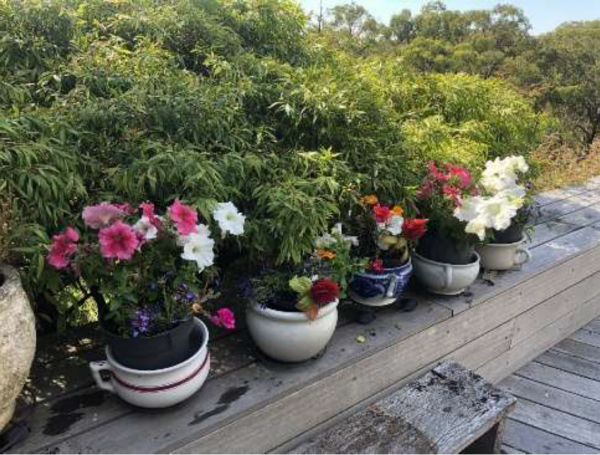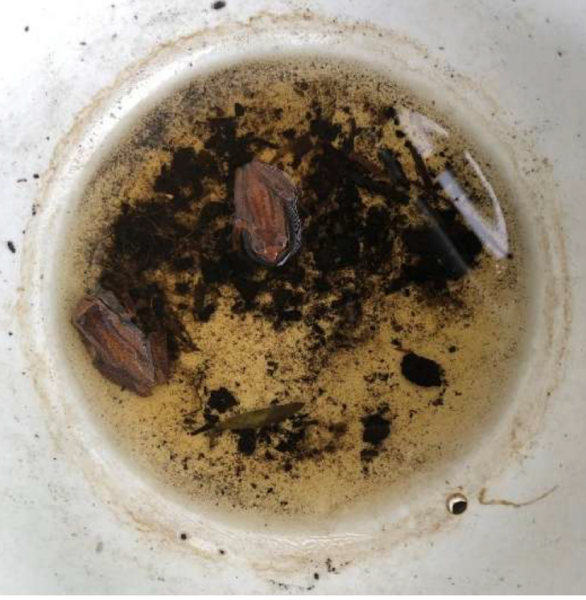Where Tree Frogs Can Sleep
Have you been frustrated when looking for advice on attracting native fauna to your garden and found little more than generic suggestions to plant bright flora and make water available?
I chanced upon a practical solution: plant seedlings of colourful perennials in 20cm diameter plastic pots; drill a hole near the bottom of old chamber pots, put a few river pebbles in their base; pop in the flower pot and wait for your new roomies.

The first photo shows my set up. The pots came from junk shops and antique markets, and I used a masonry drill bit to put a drain towards their base. When you drill the holes, put a block of wood under the drill hole to prevent damage to the pot.
Hardware stores and nurseries also have the plastic pots, potting mix, seedlings and river pebbles.
Setting up the pots is a great activity with kids as it is fun and has multiple teaching points. You finish up with a bright garden feature and an entertaining new habitat.
Only one species of brown tree frog has been attracted to this layout, and population varies from nil to about seven. There is no obvious pattern related to weather or season. But there are rarely any frogs when it is hot and the pots are dry, so I water most days. It is uncommon to see more than one frog in a pot, and – as shown in the second photo – this usually involves a damp, plainly furnished (even dirty) lodging. We experimented with layout, and the basic pot seems most popular. One that was decked out inside like a kid’s bedroom with leaves, flower stems and other pleasant-to-human touches was never occupied. Budding citizen scientists can take this much further. We didn’t feed visitors, which could open up a raft of questions. As does the variety of plant in popular (and unpopular) pots, and their attributes such as colour, shade and layout.
Good luck with your Frog BnB!
– Article and images by Les Coleman.